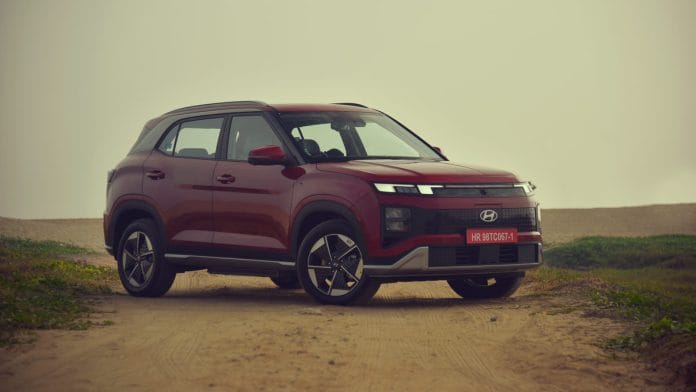I was having lunch with Virat Khullar, group head of marketing at Hyundai Motor India, along with a few other journalists, after a drive of the new Hyundai Creta Electric. He was curious to hear our impressions of the car. He mentioned that for the two other carmakers he previously worked for, the development and launch of a ‘Creta-Killer’ had been at the top of the agenda.
And yet, nothing has come close to dethroning Hyundai’s money-maker.
The Creta is Hyundai India’s best-selling car. In fact, it’s one of India’s best-selling cars, with 15,000-17,000 units sold every month. It defines its own segment—the four-and-a-half-metre-long SUV bodystyle. Since its launch in 2015, over 1.1 million Cretas have been sold in India.
Now, the Creta is electric. Here’s what’s new, and what’s not.
Also Read: I first drove Creta in 2015 and it was valuable. In 2024, it’s incredible value
Behind the wheel of the Creta EV
As with all electric vehicles, the key stats are the battery and range. Hyundai has given the Creta Electric two battery options: a 42 kilowatt-hour (kWh) battery with an ARAI-certified range of 390 kilometres and a long-range 51.4 kWh battery with a certified range of 473 kilometres. The batteries use Lithium Nickel-Manganese-Cobalt (Li-NMC) cell chemistry, similar to the batteries in the Hyundai IONIQ5 but different from the Lithium Ferro-Phosphate (LFP) cell chemistry used in vehicles with BYD Blade cells, such as BYD’s own cars, Mahindra’s new BEVs, and the upcoming Maruti-Suzuki eVitara.
Driving down the East Coast Road south of Chennai toward Puducherry gave me a good sense of the Creta Electric’s driving ability. While acceleration on most EVs is smooth, it felt sublime in this vehicle. Even when I switched to ‘Race’ mode, it just took off, but the surge of power didn’t knock your head back. While I feel that the various driving modes can be a gimmick on some cars, on the Creta Electric, they do make a difference.
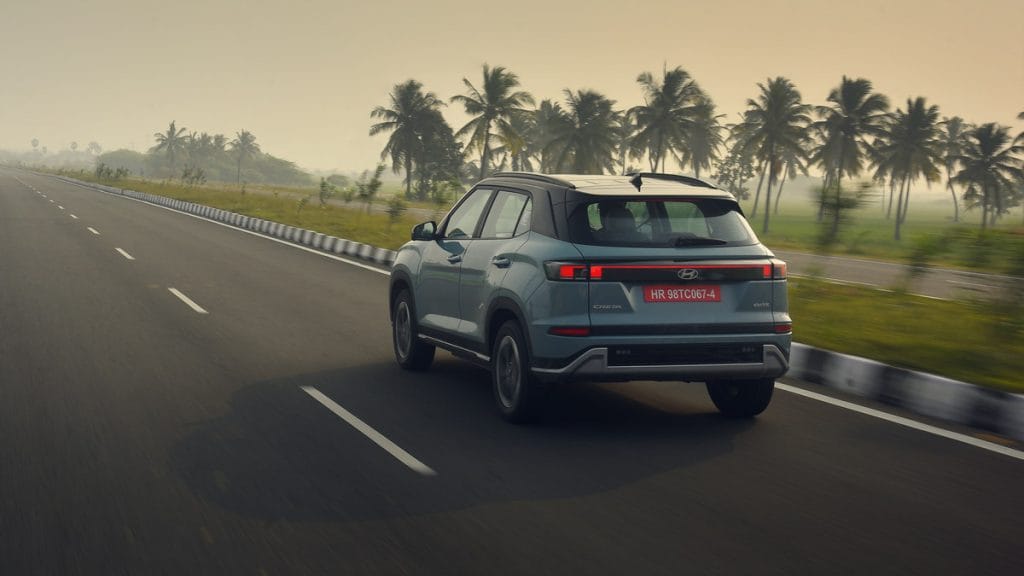
For the majority of the time—almost 200 kilometres— I drove on ‘Normal’ mode and used ‘Level 1’ regeneration. Regeneration means that when the driver lifts off the accelerator pedal, the brakes kick in to regenerate some power. The Creta Electric has five levels of regeneration, starting from Level 0, which is nothing at all.
You can change the level of regeneration using the paddle shifters on the steering column, just like changing gears on a geared internal combustion engine car. The Creta Electric also offers a smart one-pedal driving solution, which uses the forward-facing camera and sensors to adapt braking according to traffic.
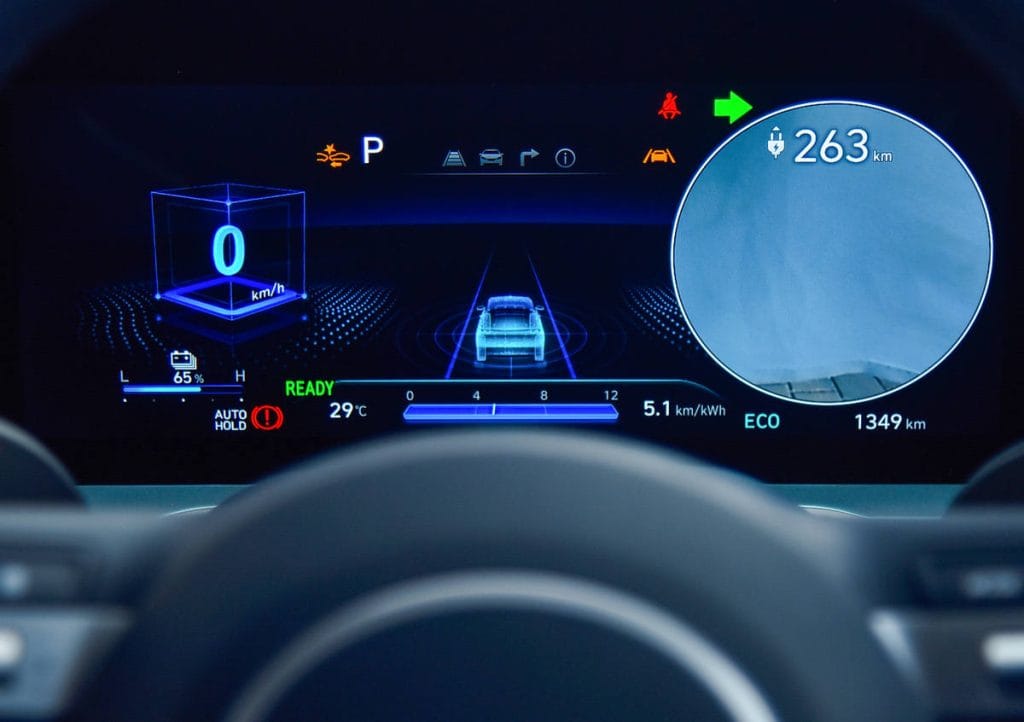
As for real-world range, by the end of almost 200 kilometres of driving down the ECR, I was averaging around eight kilometres per kWh, which would mean a range of 410-420 kilometres on a full charge. That said, I must add some caveats: despite the single-carriageway nature of the ECR south of Mamallapuram and traffic over the Pongal weekend, it was not as intense as stop-and-go urban traffic. The overcast skies and nice weather meant that the air conditioner was not strained like it would be during an Indian summer. I’d like to drive the Creta Electric for a few weeks in summer to get a better idea of things like range.
The familiarity
The other thing about the Creta Electric is the name. Hyundai has kept it, riding on the prior success of this vehicle. And it looks pretty much the same as the ICE Creta, both outside and inside.
On the outside, the only noticeable change is the front grille. Since an EV doesn’t need air intakes, it now has a flat, pixelated grille with active air flaps at the bottom that open whenever the car needs cooling. The rear bumper also gets the pixelated look, with LED reversing lights, and there’s an ‘electric’ logo on the tailgate.
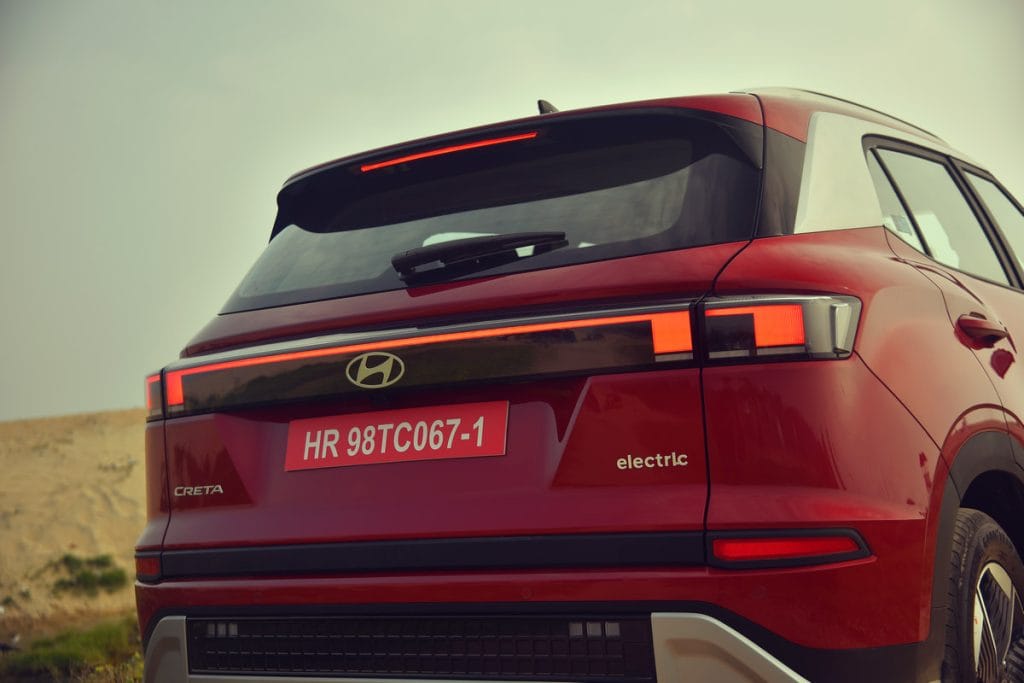
Otherwise, the Creta Electric looks exactly like any other post-facelift second-generation Creta. Although it does come in some exclusive colours, like the Ocean Blue metallic of the car I was driving.
Inside, there are some changes, but they’re minimal. It has the same twin 10.25-inch screens for the infotainment system and instrument cluster, as well as similar electric seats and plastics. The gear shifter is now on the steering column, which opens up the central console and the cupholders are raised as a result.
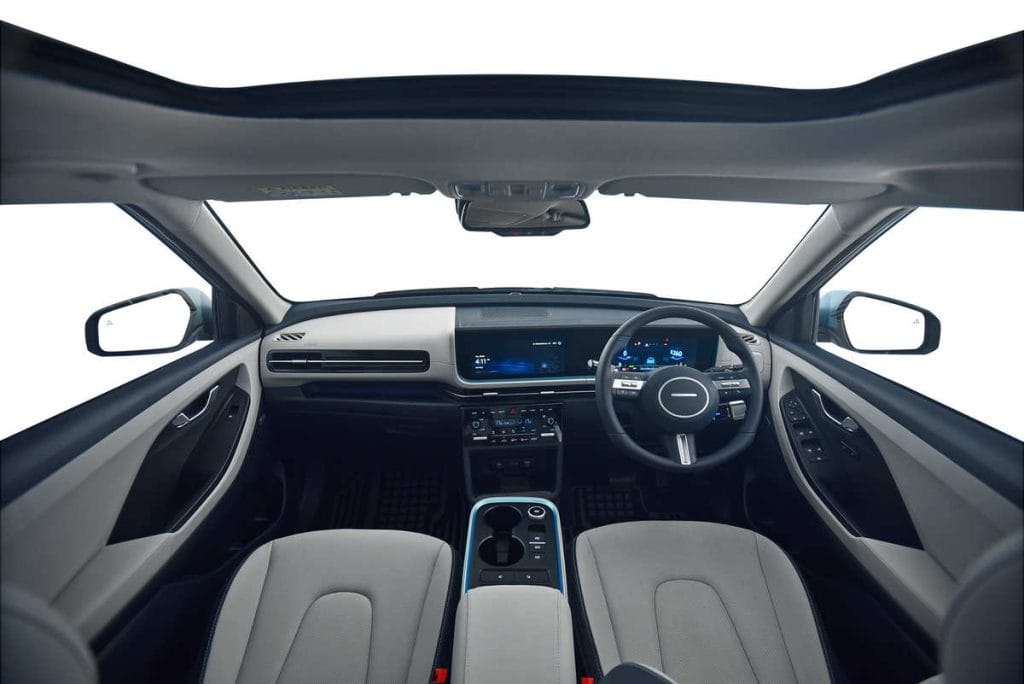
The biggest change is the steering wheel. For one, there is no large ‘H’ logo staring at you. Instead, there’s an embossed metal strip with four dots, which is quite clever since ‘…’ is the Morse code for the letter ‘H’. The audio and cruise control/ADAS functions have also been switched around, which, as someone who’s driven many Hyundai cars over the years, was confusing. But still, it’s a familiar place for anyone who’s driven a Creta.
And I think that is what Hyundai is going for. Familiarity.
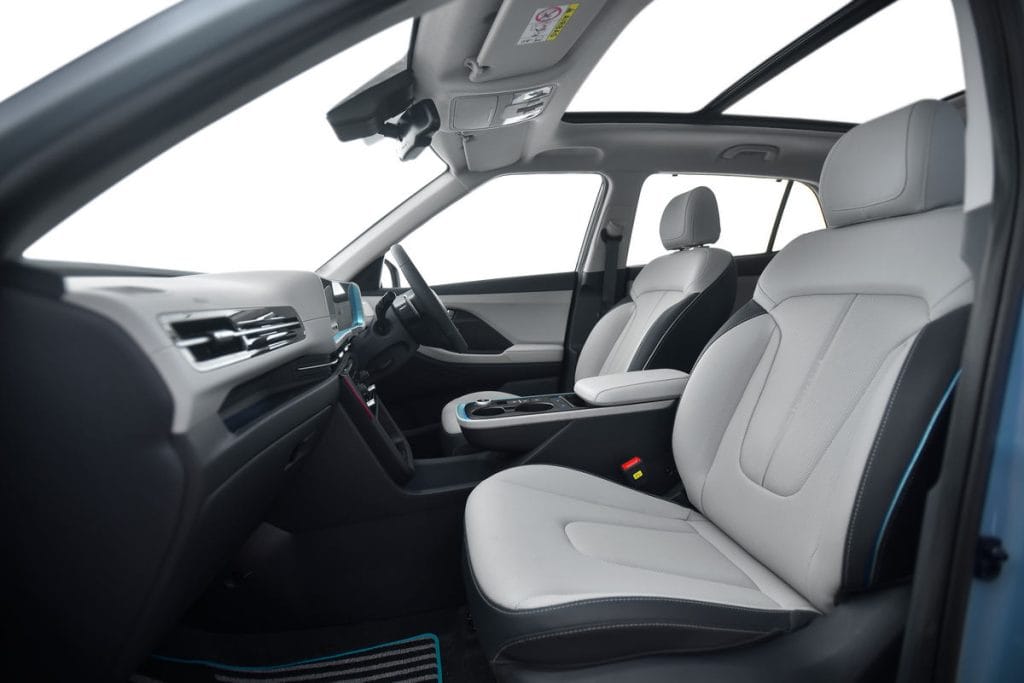
The Creta Electric does not have the razzmatazz of the new EVs from Mahindra, and while it has good performance and range, Hyundai is clearly targeting buyers who might want to switch to electric but remain hesitant and prefer a familiar brand and product. Of course, that may not clear all possible doubts. Buying a private passenger EV only really makes sense if you have a home charging set-up.
Also Read: Mahindra Thar Roxx beats Maruti Dzire at ICOTY 2025 in closest result in award’s history
Will it help India’s EV push?
Hyundai India has announced plans to install a total of 600 fast chargers across the country by 2027, with over 100 planned for Tamil Nadu as part of its initiative to electrify the state. Of the total, over 50 chargers are already functional.
Charging speed brings up one small issue I have with the Creta Electric: as of today, it can only be charged at a maximum of 50kW on a DC Fast Charger. This is odd for a vehicle with Li-NMC cells, which have a high charging rate.
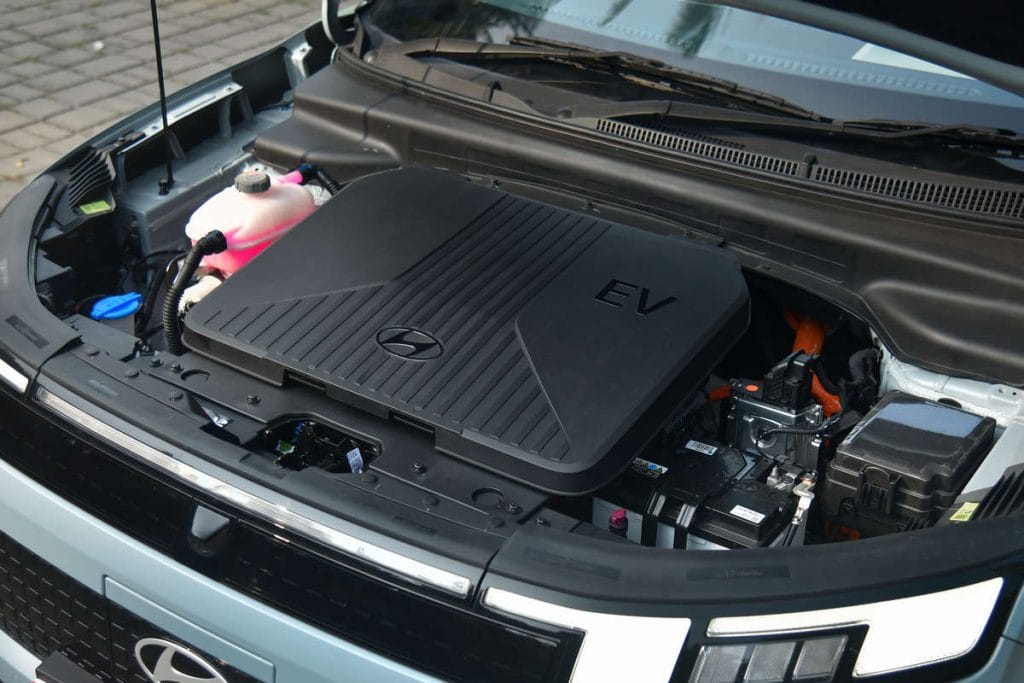
According to Hyundai, charging from 10 per cent to 80 per cent will take 58 minutes. However, the carmaker says that by the second half of the year, charging speeds will increase to 100kW, which will halve the time. This faster charging will be available to initial buyers of the Creta Electric through an over-the-air software update.
I suppose this is due to the fact that the Creta Electric is not on Hyundai’s dedicated Electric e-GMP platform, like the IONIQ5 and Kia EV6, which can be charged using super-fast 240kW chargers. A dedicated EV platform would have better cooling and thermal management. I assume that as Hyundai gathers more data from a fleet of Creta Electrics on the streets, charging speeds will improve.

How much the electric version will contribute to the Creta’s impressive sales figures remains to be seen. As of the time of writing, the prices for this vehicle had yet to be announced. But if priced well and coupled with improved charging infrastructure, the Creta Electric may well play a major role in the drive to electrify Indian roads.
@kushanmitra is an automotive journalist based in New Delhi. Views are personal.
(Edited by Asavari Singh)



